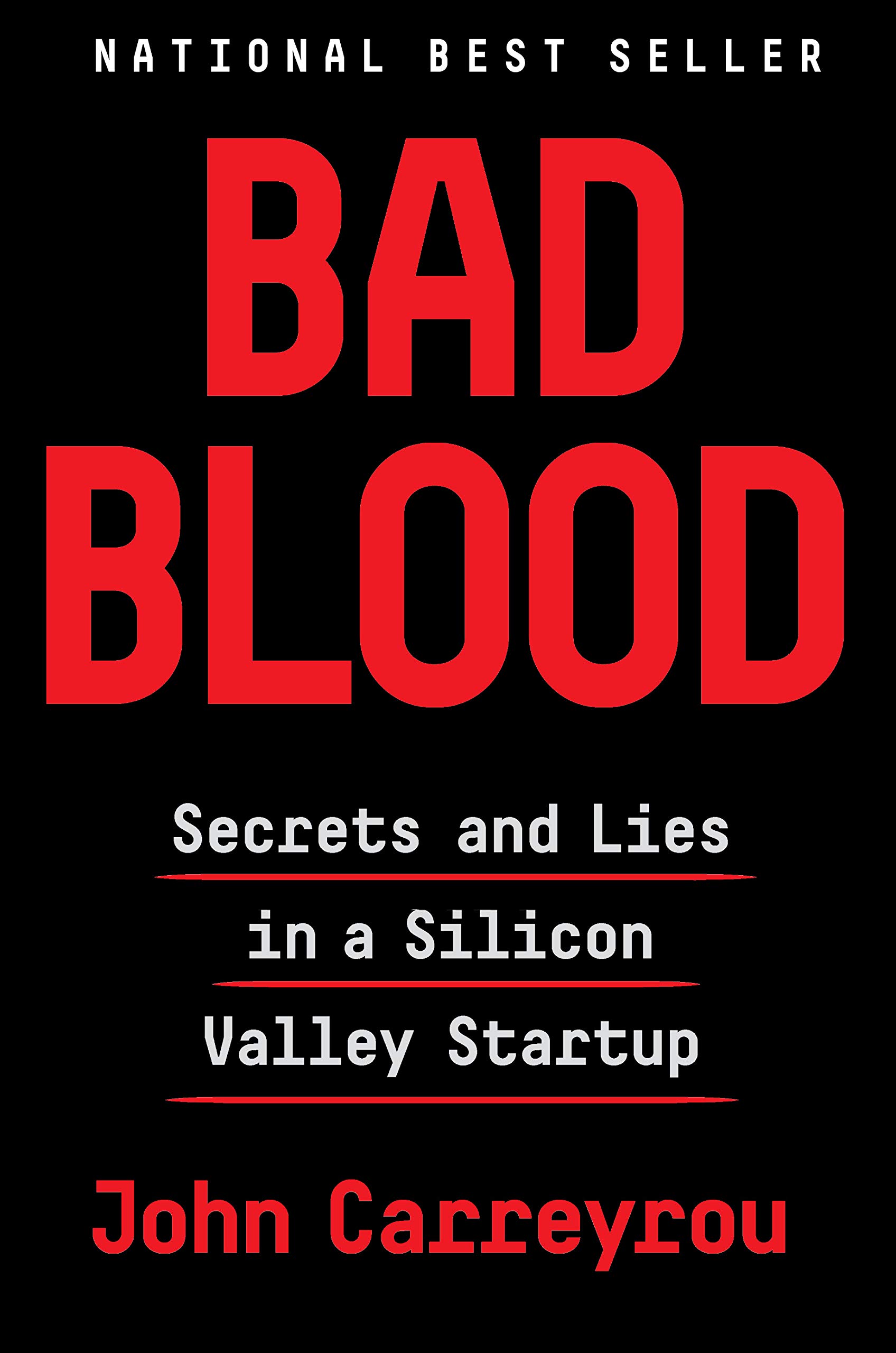Bad Blood
November 01, 2019
I recently finished reading “Bad Blood: Secrets and Lies in a Silicon Valley Startup” by John Carreyrou.

Reading always happens in context of the reader. For me, one of the contexts today is that I’ve become disillusioned with “growth and engagement” in the startup world. I acknowledge that they exist, they are real things, many people make lots of money with them, and a bit of overselling, overpromising and hypothesis testing based on claims of things that don’t exist yet is a necessary part of sales work. Taken to extreme, though, a lot of “growth hacking” is over the top for me, I am not good at it, and I don’t enjoy doing it.
“Bad Blood” studies Theranos and its two key figures, Elizabeth Holmes and Ramesh “Sunny” Balwani. In a nutshell, here’s my version of what happened: Elizabeth had an idea for portable blood testing and medicine administration device, which then got downscaled to just portable blood testing. The company started to work on a device that never functioned correctly, but the vision remained compelling and sales work continued based on the vision. A vicious circle of lies emerged, and finally got exposed.
It is a story about what happens when the gap between reality and promises becomes too great. Moreover, it happened in a high-stakes field where people’s health and life is at risk. Startups are a risky business and there aren’t many published cases of someone in court because of wrongdoing. In this case, it’s justified. The story is not over yet, as some of the cases are scheduled to start in 2020.
I was surprised to see my ex-boss and friend from Mint.com times Justin Maxwell featured early in the story. As his LinkedIn profile says, “Left once I figured out what was going on.” I realized that during our time together in California, we never once spoke about Theranos. I now asked Justin after reading the book. He said he kept a low profile about his experience because at the time, Theranos lawyers “came after me” without being more specific. Makes a lot of sense, as we can read in the book that Theranos was really aggressive with their lawyering. For me, it’s curious to have this secondhand personal connection to the story, and I can totally see people like Justin leaving that kind of place very quickly.
Reality distortion is a curious subject, and this book provides a fascinating study. Holmes and Theranos managed to assemble an impressive roster of board members and enthusiasts, many of whom chose to believe her and not look at the facts until the very end. How does this happen? From the outside, it is always easy to say “I would never fall for this”, similarly as you’d never fall for a Ponzi pyramid scheme or some other scam. I think the Theranos case shows that there is real power in stories and vision, so much that they can overpower the facts and objective reality, because they are much easier to believe in. Once you develop some belief or conviction, confirmation bias kicks in and you dig yourself into a deeper and deeper hole with ever-growing sunk cost. This seems to be true of whole businesses as well as individuals from all walks of life.
Towards the end, the book becomes a documentary thriller as Carreyrou himself becomes a character and documents how he and Wall Street Journal ended up publishing the story while working with sources whom Theranos harassed, and through legal threats. I wasn’t expecting this to be a story of high-quality journalism and editorial standards, and it became hard to put down the book through several long nights. It’s fascinating how this is a story of our modern times and everything in the book is chronicled in media. YouTube has many videos on the subject from various sources and across the whole timeline of the story.
Bad Blood reminded me of Disrupted, where journalist Dan Lyons plants himself at HubSpot and works there for a while, experiencing firsthand the various aspects of a high-growth startup. I had arguments with people about Disrupted. I identified with the book and its author a lot, but others said it provided too cynical of a view. Bad Blood is definitely of higher quality in journalistic terms: it is based on several years of real journalism, whereas Disrupted is just a collection of personal anecdotes. Why I put them in the same bucket is that they provide great anti-examples of situations I hope I will never be in. One interesting design technique is to do a “bad” version of some product or experience: the worst possible thing you can imagine. The real thing that you are working on, is then the opposite of that. Disrupted and Bad Blood provide anti-examples of company environments, culture and leadership.
Bonus podcast episode
Since I now work in the space of beating financial crime, I listen to related podcasts. Just coincidentally, I came across an episode that doesn’t directly talk about the Theranos case, but explains the wider phenomenon of trust in societies, and the dark arts of con artists and financial scams, starting from the example of Bernie Madoff.
The episode is based on the book that I haven’t yet read, but might, I really liked this episode and how it connected to Theranos in my mind.